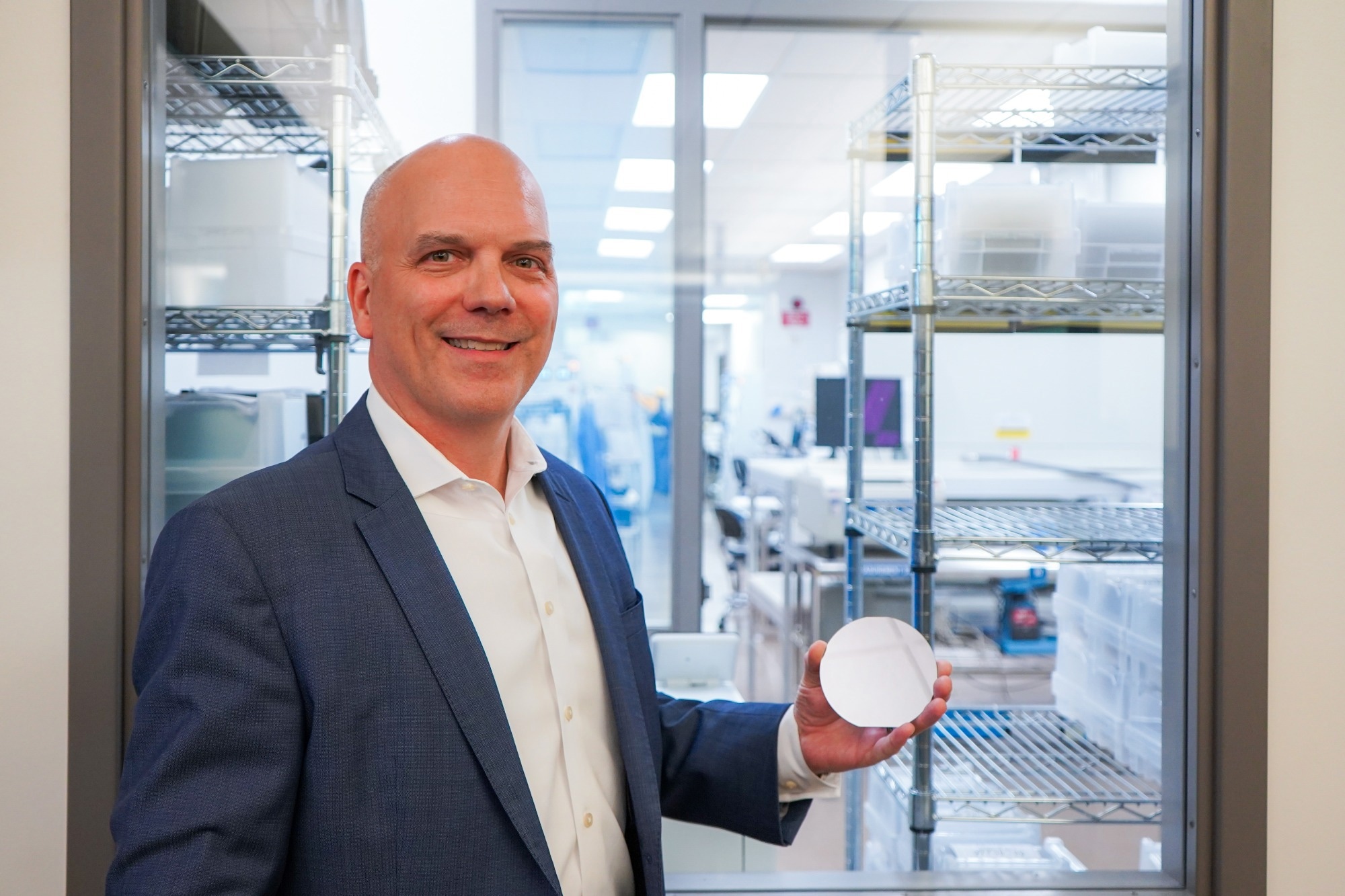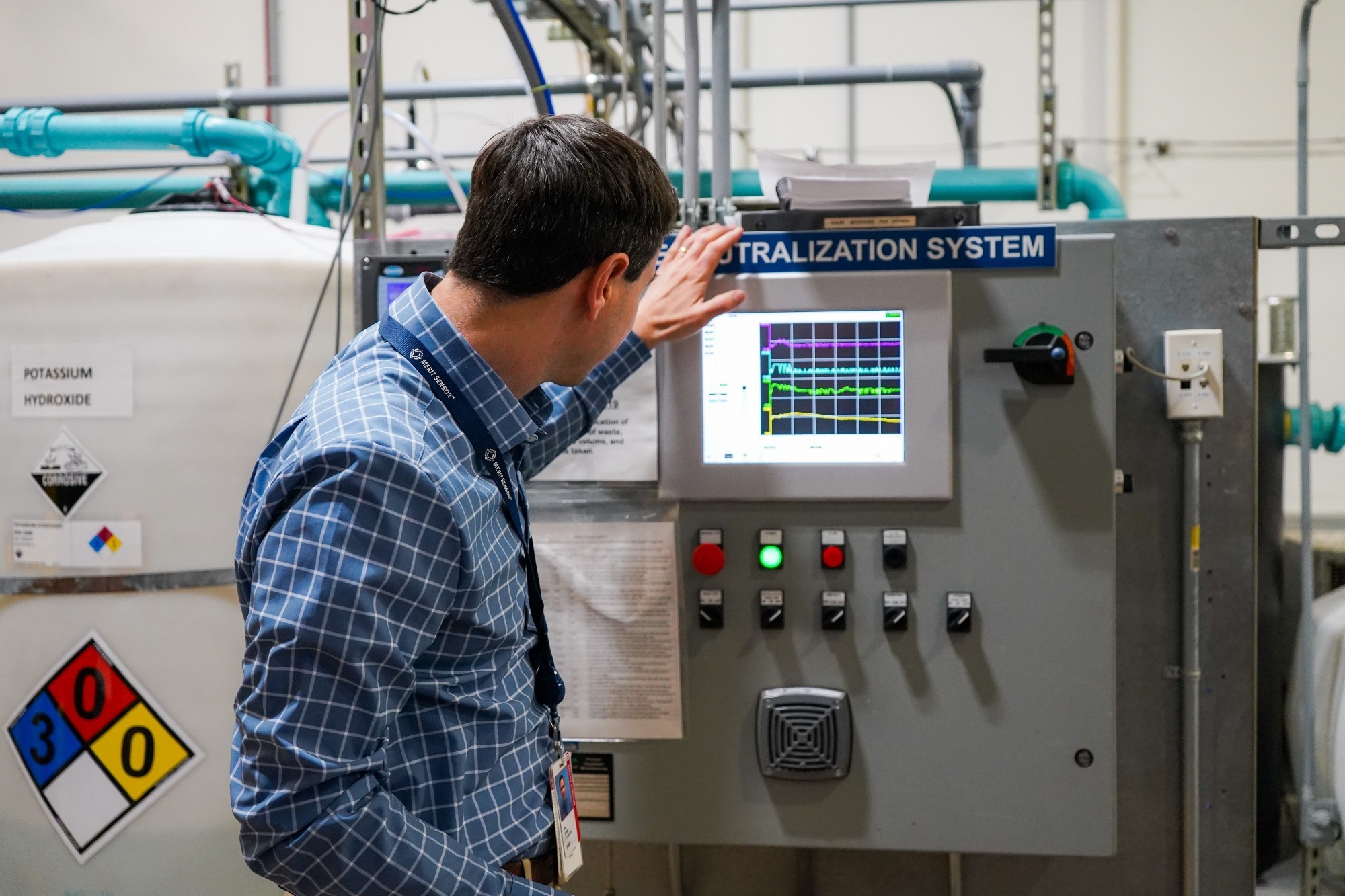In this interview, AZoSensors speaks to Merit Sensor's Rick E. Russell about the critical role MEMS pressure sensors will play in water conservation efforts.
Could you describe the role of water in the MEMS pressure sensor manufacturing process and the key reasons behind implementing a water-conservation initiative?
Deionized water is the main ingredient for wafer fabrication processing and is similarly the largest waste product that we have to deal with. We have been prioritizing the sustainability of our operations for a number of years, and both reducing water usage and minimizing water waste have been central to this initiative.
This work also links into our wider organizational goals around sustainability. We believe that as a global leader in healthcare technology, Merit Medical has a major role to play in contributing to a sustainable future. Improving our organization's sustainability is also key to the success of our overall business strategy.
In what ways does the water-recycling program address the challenges associated with wastewater treatment and disposal during the sensor fabrication process?
Many of our sites are based in desert environments where available water is at a premium, so we strive to conserve as much water as possible.
Our waste naturalization system already balances the wastewater’s pH before we send it down the drain, so we thought it would be worth the investment to see if we could recycle this water instead.
Merit Sensor - Water Recycling Efforts
Merit Sensor - Water Recycling Efforts from Merit Medical on Vimeo.
Can you walk us through the steps involved in recycling and reusing wastewater to produce MEMS pressure sensors?
We utilized the Water Risk Filter tool provided in collaboration between the World Wildlife Fund for Nature (WWF) and KFW DEG, and this helped us to understand basin water risk at our operating locations.
Since then, we have identified three manufacturing locations (Tijuana, Mexico; Salt Lake City, Utah; and Pearland, Texas) as water-stressed sites and invested capital over the past three years at these drought-vulnerable operations to allow us to better conserve and store water.
To recycle and reuse wastewater, we essentially pass it through additional filtration cycles and add chemicals to strip away any unnecessary contaminants.
In 2022, we implemented two successful projects of this nature at our Salt Lake City site: a cooling-water recirculation project and a process-water recirculation project within our sensor operations. We are also working on a similar project at our facility in Tijuana, Mexico, which is our second largest site for water consumption and another where a risk of water scarcity has been identified.
Considering the involvement of acids and bases in manufacturing, what measures have been implemented to treat and neutralize wastewater before discharge?
Our waste neutralization system continuously monitors the pH of the contaminated water and balances the pH with the necessary acid or base before discharging the water down the drain.
How does Merit Sensor’s water-saving initiative align with the broader regional efforts to mitigate water usage?
As reported by our CEO in our 2023 Sustainability Report, Merit completed its third year of progress toward our 2030 Operational Sustainability Goals, and we are seeing more evidence of momentum as we consistently reach and surpass each of our targets for energy, water, and greenhouse gas emissions.
Efforts to mitigate water use vary between regions. Water is one of our main environmental challenges and opportunities, so we have worked to better understand the impact of water use at each of our operating facilities and to implement water efficiency programs on a regional level.
These goals and initiatives are addressed at the individual site level, and we can do this by understanding the local and regional water basin activity and stress.

Image Credit: Merit Sensor
Achieving a ninety percent water recycling efficiency is an ambitious goal. What innovative approaches or technologies are Merit Sensors exploring to reach this objective?
As pointed out in our 2023 Sustainability report, we have other ongoing projects, such as closed-loop water cooling and xeriscaping, that will help us reach our goal. The water recirculation project will also be instrumental in our success in this area.
We have already seen a 17 % decrease in water withdrawal per dollar of revenue earned since 2020, already surpassing our global 2030 targets. This water intensity improvement was primarily driven by water-reduction and efficiency projects, including the use of xeriscaping and installing water-recirculation systems at our largest site in Salt Lake City, Utah.
Can you share some of the critical lessons your team learned throughout the process and how these experiences have influenced your approach to sustainability in other aspects of the company’s operations?
Merit was initially focused on xeriscaping because it was the most straightforward. We knew that fabrication was the biggest culprit for water consumption, but the cost of water does not provide any payback. We learned very quickly that you must spend money to save water. If water costs more than gasoline, then everyone would be focused on saving water.
Does the water-recycling program offer any other potential environmental benefits besides conserving water?
We at Merit believe that spending money to save water would, in turn, save lives. Water is essential for drinking, farming, firefighting, reservoirs and dams, wildlife, and much more. This is also important because several of our sites are located in regions prone to droughts, and any water saved can potentially be used by local communities or amenities.
How do you envision the long-term impact of this initiative on the company’s operations and its contribution to sustainable manufacturing?
Merit is committed to our long-term goals of maintaining our ISO14001 and ISO50001 certifications. This includes not only water but also energy consumption and emissions.
For example, 50 % of our manufacturing sites (Salt Lake City, Utah; Galway, Ireland; Venlo, the Netherlands; and Paris, France) are certified to ISO 50001, and we continually seek to improve our energy management systems.
By implementing this system in our sensor operations and fine-tuning its performance, we are paving the way for similar solutions at other Merit sites to continue reaping the benefits of using water efficiently.

Image Credit: Merit Sensor
MEMS pressure sensors find applications in various industries. can you elaborate on the quality control measures to ensure recycled water meets the required standards for diverse applications?
Further testing has proven that recycled water does not affect the quality of our MEMS pressure sensors or the operation of our fab. We currently deliver pressure sensors to monitor the pressure in various water applications, such as water meters and tank levels.
Apart from the current water-recycling project, has Merit Sensor integrated other sustainable practices into its manufacturing process?
Merit is focused on three major sustainability goals: decreasing water intensity by 10 %, decreasing energy intensity by 10 %, and decreasing GHG emissions by 15 % by 2030. We are also working towards increasing the proportion of Merit’s energy from renewable sources to 50 % of total usage.
Increasing our use of renewable and carbon-free energy is a key part of our long-term strategy. We have already committed to purchasing 50 % of our total energy from renewable and carbon-free sources by 2030, and given the large amount of energy required by our operations, we also plan to explore opportunities around installing solar panels and the potential of carbon offset credits.
Wider goals include reducing product packaging, transitioning to paper-free systems where possible, and increasing the percentage of waste at our facilities that is recycled.
About the Speaker

Rick joined Merit Sensor in October of 2009 where he managed worldwide sales and business development until he became President of the group in 2013. He brings many years of organizational management and technical expertise in the area of MEMS silicon fabrication. With more than 25 years of experience managing sales to product development across multiple industries, his knowledge has enabled him to expand the operations to accommodate a number of new customers in their state-of-the-art wafer fab located in Salt Lake City.
Rick studied mathematics and computer science at Eastern Michigan University and received a Bachelor of Science in Electrical-Engineering from Lawrence Technological University.

This information has been sourced, reviewed and adapted from materials provided by Merit Sensor.
For more information on this source, please visit Merit Sensor.
Disclaimer: The views expressed here are those of the interviewee and do not necessarily represent the views of AZoM.com Limited (T/A) AZoNetwork, the owner and operator of this website. This disclaimer forms part of the Terms and Conditions of use of this website.